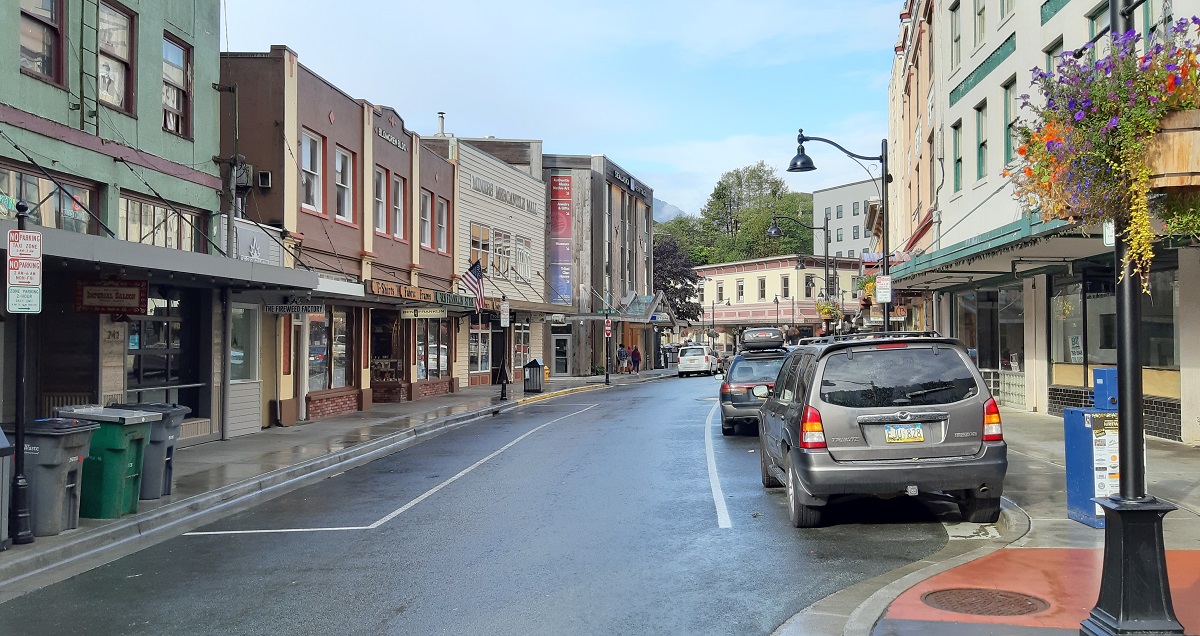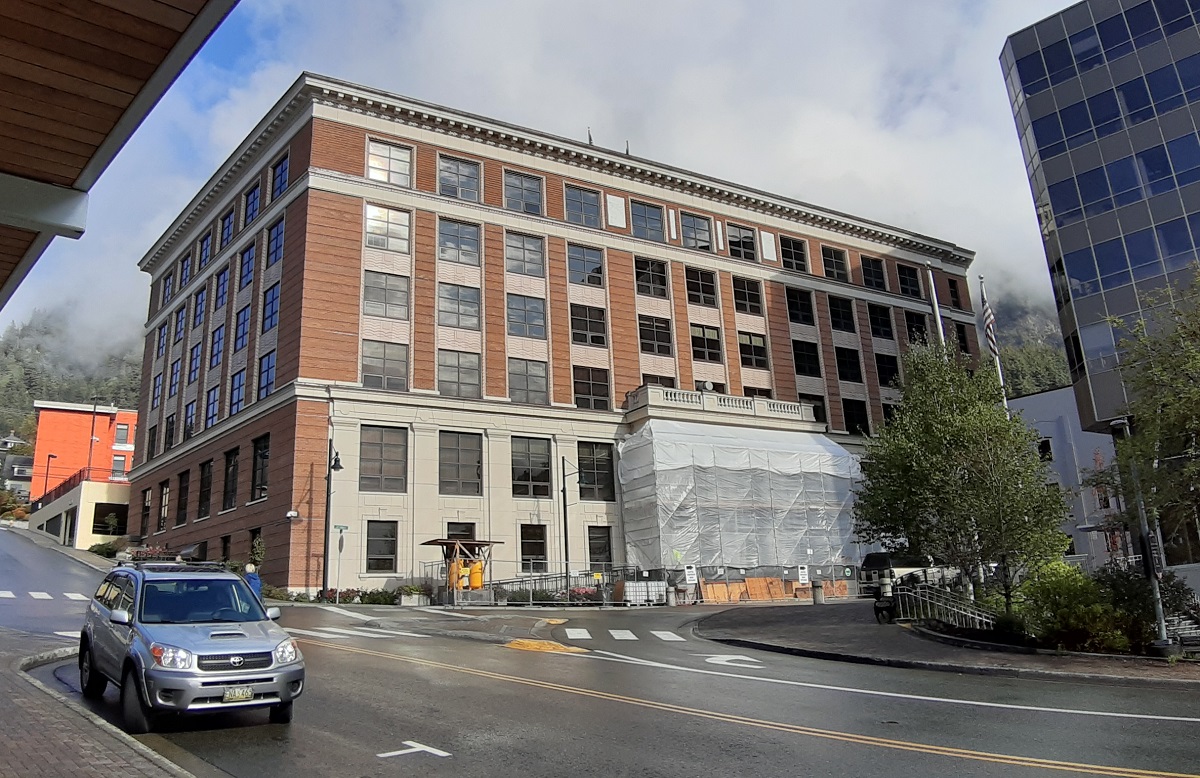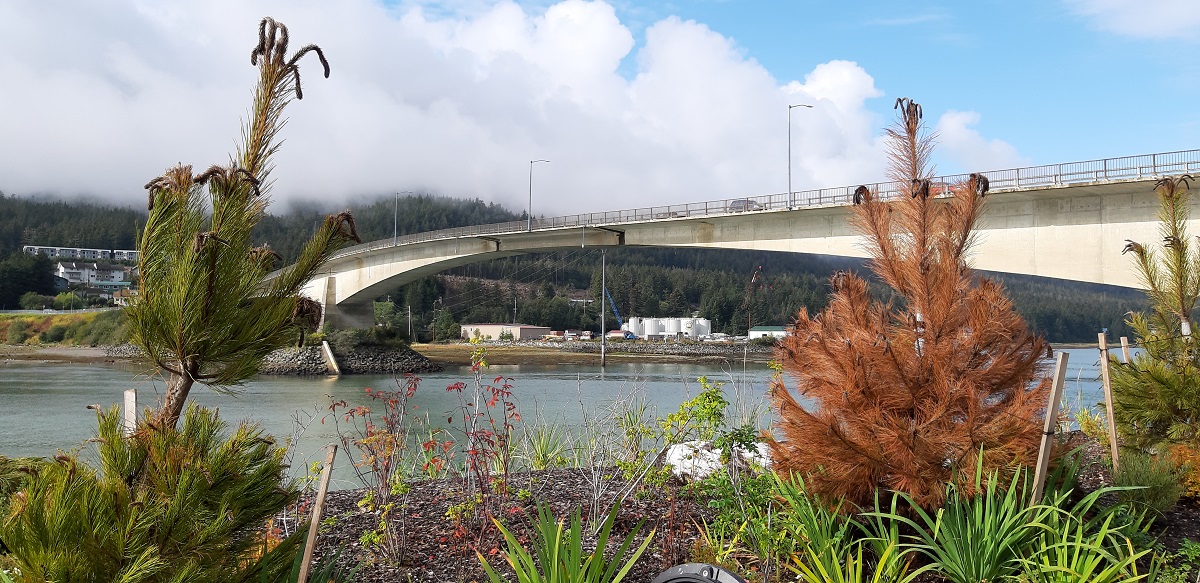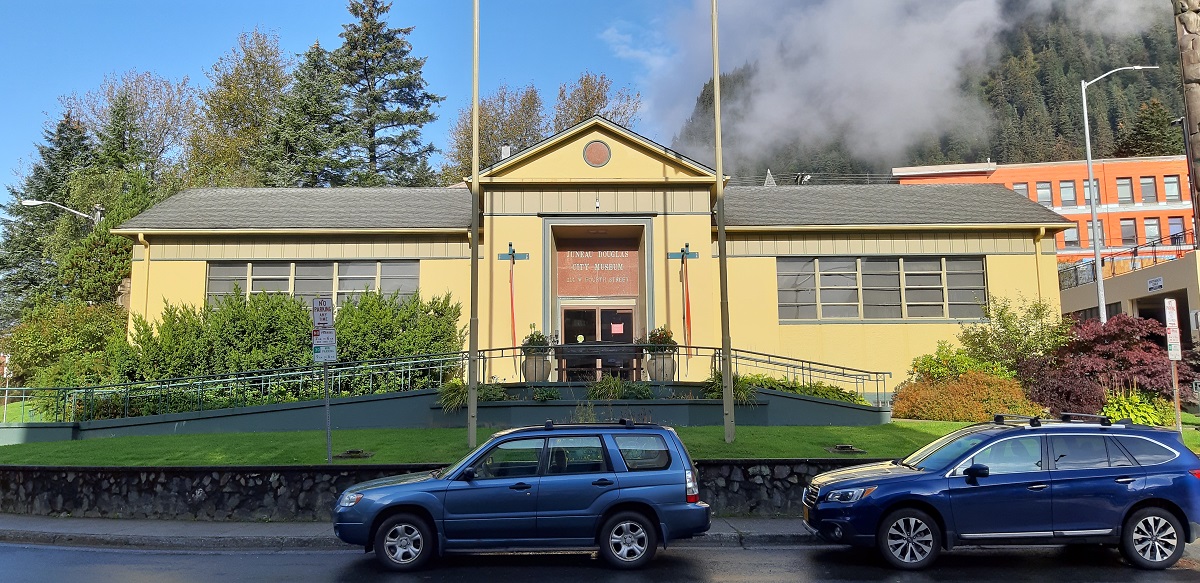Juneau is the capital of Alaska, but it is like no other of the US state capitals. Juneau has only 30,000 inhabitants and it is so remote that you can only sail and fly to get there. The surroundings consist of Alaska’s breathtaking mountain and fjord landscape.
The town of Juneau was established in 1880 as a future gold digger town. Some land was reserved for a camp after a gold find, and Juneau grew in the following years. From the first decades you can still see some of the beautiful buildings in late Victorian style, which constituted shops, homes, etc.
The modern Juneau benefits from tourism, which not least comes with the many cruise ships that frequently dock at the city’s berths. From here the experiences start almost immediately, because the historic Juneau is just a few steps from the ships. So do experiences in the beautiful scenery; eg a trip to the top of Mount Roberts.
When in Juneau, you can experience bears, eagles, glaciers, mountains, dog sleds, whales and more. A few things are easily reached, such as the Mendenhall Glacier, while others require more transportation. There is a great selection of offers with boats, seaplanes and helicopters for all the places where you get to almost untouched nature.








The Pre-European History
Off the Juneau lies the Straits Gastineau Channel, and it was used as a fishing area by several local Native American tribes long before the arrival of the Europeans. At our Indian Point today, there was a settlement and a burial ground.
European trade
The first European country to formally establish itself in Alaska was Russia, which established a colony here in the period 1784-1867. The Russians traded in great style with local tribes. They traded and colonized much of Alaska, but not the area around Juneau.
The first European to arrive was Joseph Whidbey of the British Royal Navy. Whidbey was on George Vancouver’s expedition 1791-1795. On board HMS Discovery, he saw the ice-filled Gastineau Channel in the summer of 1794, but considered that it could not be sailed.
Gold ruch
It took many years before Juneau settled. In the mid-1800s, gold fever broke out in California, and many settlers and knights moved to the American west coast. When the gold finds were ringing in California, many were looking for happiness along the coast to look for other gold deposits.
In 1880, George Pilz, a Sitka mining director, pledged a reward to any chief who could lead Pilz to new discoveries. It gave way when Chief Kowee came up with some ore which was interesting enough for a closer examination of the site. Twice Joe Juneau and Richard were sent to Gold Creek, and they found gold pieces the size of peas and beans.
After that it went strong, and on October 18, 1880, two emissaries marked an area of 160 acres where an upcoming mine camp was to be established. Already after a year, so many had arrived at the camp that it had become a smaller city, and it was the first city to be established in the region following the US acquisition of Alaska from Russia.
Initially, the settlement was known as Rockwell, and then it was named Harrisburg after Richard Harris, who had helped to find gold in 1880. On December 14, 72 people at a miner’s meeting decided to name the place Juneau after Joe Juneau.
City Development
The Russian Orthodox Church had been helping Tlingite people elsewhere in Alaska since the early 1800s, where they had also held worship services and translated scriptures into Native American languages. An Orthodox priest was invited to Juneau, and about 700 people converted to the Orthodox faith, led by Chief Yees Gaanaalx.
After the Orthodox conversion, the city’s Russian Orthodox Church was erected in 1894. It was one of many wooden buildings erected in Juneau in the decades around 1900, with the city’s appearance changing from its inception camp to a city with built main streets, residential neighborhoods and so on.
The Capitol and Alaska
Alaska were not yet a US state, but the territory was obviously to be administered. In the years 1910-1912 a governor’s palace was built in Juneau, where the governor of Alaska was given residence and seat. It was from this building that Warren G. Harding in 1923 as the first American president to speak in Alaska.
In 1911, the US Congress in Washington granted funds for the construction of a government building in the territory of Alaska. However, this did not happen immediately, partly because the World War I delayed the project and partly proved difficult to acquire the necessary land.
Some of the city’s citizens joined in with donations, and in the late 1920s construction could begin. On February 14, 1931, the building was inaugurated as The Federal and Territorial Building and then used for various government and administrative purposes.
The 49th State
President Dwight D. Eisenhower signed The Alaska Statehood Act on July 7, 1958, and with it the territory of Alaska became a United States state with effect from January 3, 1959. The state became the number 49 in the United States.
Juneau became the capital despite the city being by far the largest in the state. The two largest urban areas in Alaska are Anchorage and Fairbanks, and since 1959 it has been proposed many times to relocate the capital. Most proposals deal with a move to somewhere between Anchorage and Fairbanks so as not to distort the relationship between the two cities. Several times a relocation has been put to the vote, but each time the proposal has been dropped, which is why Juneau remains Alaska’s capital.
Juneau Today
The population of Juneau increased significantly after the city became the capital. Some state administration came to town, and it provided growth for newcomers. New growth occurred in the late 1970s when the state’s oil economy boomed with improved economy and new jobs.
Growth slowed sharply in the 1980s, with Juneau improving its infrastructure with the new bridge between Juneau and Douglas. Since then, population projections show that Juneau growth will be low for some years.
Tourism and, in particular, cruise ships have ensured Juneau’s development in recent decades. From more than 200,000 cruise guests in 1990, the number of visitors in the city rounded up 1,000,000 from the seaside in 2006. This has given many jobs in the season, which of course are affecting the economy of the city and its citizens.

Overview of Juneau
Juneau is the capital of Alaska, but it is like no other of the US state capitals. Juneau has only 30,000 inhabitants and it is so remote that you can only sail and fly to get there. The surroundings consist of Alaska’s breathtaking mountain and fjord landscape.
The town of Juneau was established in 1880 as a future gold digger town. Some land was reserved for a camp after a gold find, and the town grew in the following years. From the first decades you can still see some of the beautiful buildings in late Victorian style, which constituted shops, homes, etc.
About the upcoming Juneau travel guide
About the travel guide
The Juneau travel guide gives you an overview of the sights and activities of the American city. Read about top sights and other sights, and get a tour guide with tour suggestions and detailed descriptions of all the city’s most important churches, monuments, mansions, museums, etc.
Juneau is waiting for you, and at vamados.com you can also find cheap flights and great deals on hotels for your trip. You just select your travel dates and then you get flight and accommodation suggestions in and around the city.
Read more about Juneau and the USA
Buy the travel guide
Click the “Add to Cart” button to purchase the travel guide. After that you will come to the payment, where you enter the purchase and payment information. Upon payment of the travel guide, you will immediately receive a receipt with a link to download your purchase. You can download the travel guide immediately or use the download link in the email later.
Use the travel guide
When you buy the travel guide to Juneau you get the book online so you can have it on your phone, tablet or computer – and of course you can choose to print it. Use the maps and tour suggestions and you will have a good and content-rich journey.
State Capitol • Great Whales • Russian Church • Marine Highway

Overview of Juneau
Juneau is the capital of Alaska, but it is like no other of the US state capitals. Juneau has only 30,000 inhabitants and it is so remote that you can only sail and fly to get there. The surroundings consist of Alaska’s breathtaking mountain and fjord landscape.
The town of Juneau was established in 1880 as a future gold digger town. Some land was reserved for a camp after a gold find, and the town grew in the following years. From the first decades you can still see some of the beautiful buildings in late Victorian style, which constituted shops, homes, etc.
About the upcoming Juneau travel guide
About the travel guide
The Juneau travel guide gives you an overview of the sights and activities of the American city. Read about top sights and other sights, and get a tour guide with tour suggestions and detailed descriptions of all the city’s most important churches, monuments, mansions, museums, etc.
Juneau is waiting for you, and at vamados.com you can also find cheap flights and great deals on hotels for your trip. You just select your travel dates and then you get flight and accommodation suggestions in and around the city.
Read more about Juneau and the USA
Buy the travel guide
Click the “Add to Cart” button to purchase the travel guide. After that you will come to the payment, where you enter the purchase and payment information. Upon payment of the travel guide, you will immediately receive a receipt with a link to download your purchase. You can download the travel guide immediately or use the download link in the email later.
Use the travel guide
When you buy the travel guide to Juneau you get the book online so you can have it on your phone, tablet or computer – and of course you can choose to print it. Use the maps and tour suggestions and you will have a good and content-rich journey.



Similar to Juneau Travel Guide
There are no listings matching your search.
Reset